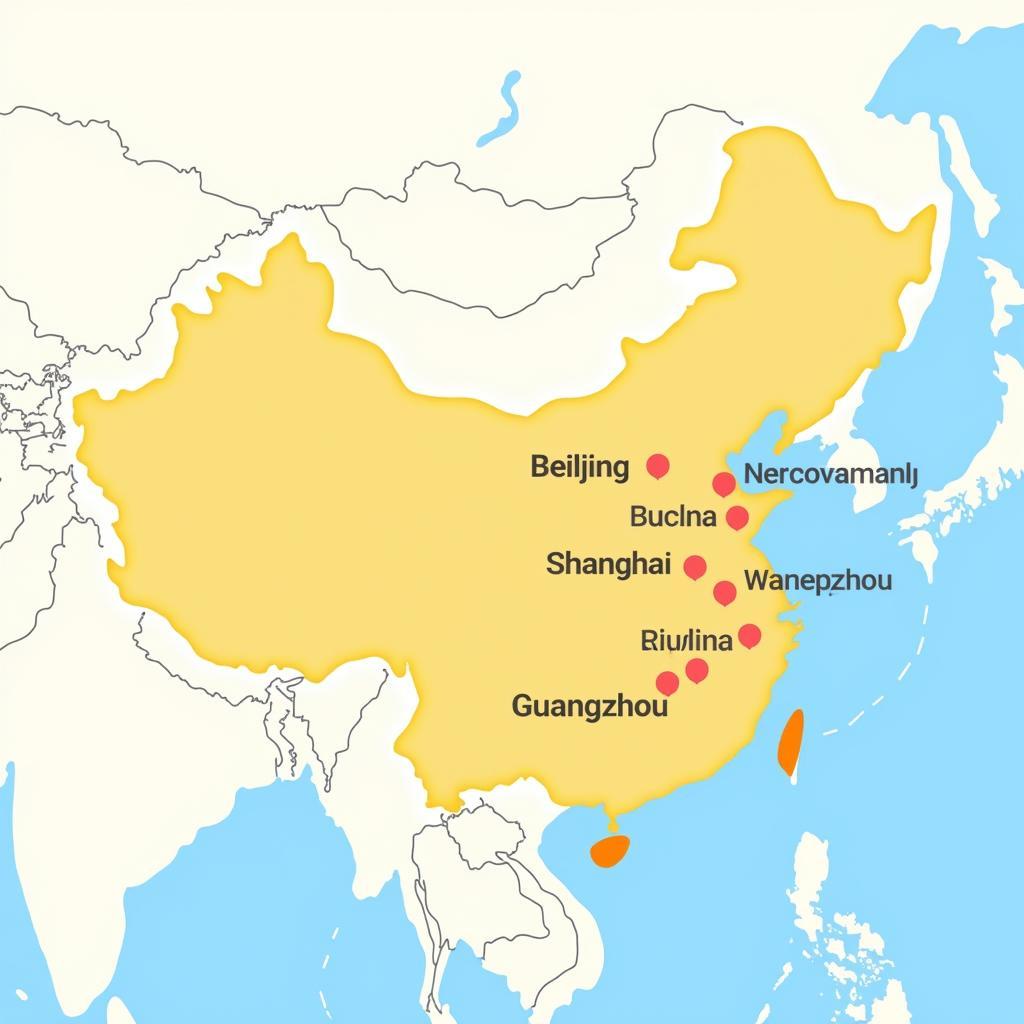China’s rapid economic growth has fueled a surge in air travel, leading to significant development in its aviation infrastructure. This has resulted in a considerable increase in the Number Of Airports In China, transforming the country into a global aviation hub. This article delves into the evolving landscape of Chinese airports, exploring their distribution, significance, and future prospects. Check out more information about major airports.
Understanding the Growth of China’s Airports
The expansion of China’s civil aviation sector has been nothing short of remarkable. Driven by increasing domestic and international travel demand, the number of airports in China has witnessed substantial growth in recent decades. This expansion is a key element of China’s broader infrastructure development strategy, aiming to connect remote regions and facilitate economic integration.
Factors Driving Airport Development
Several factors contribute to the rapid growth of airports in China:
- Economic Growth: China’s booming economy has created a large and increasingly affluent middle class with a growing appetite for air travel.
- Government Support: The Chinese government has prioritized aviation infrastructure development, providing significant investments and policy support.
- Tourism Boom: China has become a major tourist destination, both for domestic and international travelers, further fueling the demand for air travel and airport capacity.
- Regional Development: The construction of new airports plays a vital role in promoting regional economic development, connecting previously isolated areas to the national and global economy.
 Rapid Expansion of Chinese Airports
Rapid Expansion of Chinese Airports
Distribution of Airports Across China
China’s airports are strategically distributed across the country, with a higher concentration in the eastern coastal regions where economic activity and population density are highest. However, recent years have seen a growing focus on developing airports in the central and western regions to promote balanced regional development. More information about Chinese airports can be found on our page about major airports in china.
Regional Airport Hubs
Several major cities serve as regional aviation hubs, connecting various parts of China and facilitating international connections. These hubs play a crucial role in optimizing air traffic flow and supporting the growth of the aviation industry.
- Beijing: Beijing Capital International Airport and Beijing Daxing International Airport are major international gateways.
- Shanghai: Shanghai Pudong International Airport and Shanghai Hongqiao International Airport serve as important hubs for international and domestic flights.
- Guangzhou: Guangzhou Baiyun International Airport is a key hub in southern China.
 Regional Airport Hubs in China
Regional Airport Hubs in China
How Many Airports Are There in China?
While the precise number of airports in China fluctuates due to ongoing construction and development, there are over 200 civil airports currently in operation. This number includes airports of varying sizes and capacities, from large international hubs to smaller regional airports serving domestic routes. You can find information about airport counts globally on our how many airports page. For specific information on CGO airport, visit our cgo airport china page.
Classifying Chinese Airports
Chinese airports are classified based on their size, function, and operational capacity. This classification system helps to manage air traffic and allocate resources effectively.
- Hub Airports: These large airports serve as central connecting points for airlines and handle a significant volume of international and domestic flights.
- Regional Airports: These airports primarily serve domestic routes, connecting smaller cities and regions within China.
- General Aviation Airports: These airports cater to smaller aircraft and are often used for private aviation, flight training, and other specialized purposes.
The Future of China’s Airports
China’s aviation sector is poised for continued growth in the coming years, with further expansion of airport infrastructure planned. This growth will be driven by ongoing economic development, increasing travel demand, and technological advancements. What about south korea airport name?
 Future of Chinese Airport Design
Future of Chinese Airport Design
Conclusion
The number of airports in China has grown significantly, reflecting the country’s economic dynamism and its commitment to enhancing connectivity. This expansion has transformed China into a global aviation powerhouse, facilitating trade, tourism, and economic integration. The ongoing development of airport infrastructure will continue to shape the future of air travel in China and beyond.
FAQ
- What is driving the growth of airports in China? Economic growth, government support, and increasing travel demand are key drivers.
- Which are the major airport hubs in China? Beijing, Shanghai, and Guangzhou are major hubs.
- How are Chinese airports classified? They are classified based on size, function, and operational capacity.
- What is the future outlook for China’s airports? Continued growth and expansion are expected.
- How many airports are there approximately in China? Over 200 civil airports are currently in operation.
- What is the role of regional airports in China? They primarily serve domestic routes, connecting smaller cities and regions.
- Why is airport development important for China? It supports economic growth, tourism, and regional development.
Do you have other questions? Here are some related articles that may interest you: Major Airports, Major Airports in China, South Korea Airport Name, How Many Airports, and CGO Airport China.
Need assistance? Contact us at +13089626264, email us at [email protected], or visit us at 404 Bothwell St, Oxford, NE 68967, USA. Our customer service team is available 24/7.

